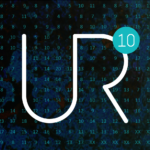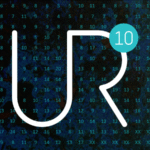Risk Tank: Can you sell science and DRR solutions?
identify · Stakeholder collaboration · risk assessment · risk communication · earthquake · volcano
Many times, the person who has the best understanding of a city, its risks and the best alternatives for solutions does not have enough communication skills. On the other hand, those who have good communication skills are sometimes not fully aware of the risks that exist in their city or country or do not entirely comprehend technical scientific documents that explain those risks. Also, whenever you have the opportunity to explain an idea or solution to a stakeholder, you have limited time, so you must have a really good comprehension of the issue and be able to explain a really complex problem and its solution in simple terms and within limited time, such as 1 minute.
This challenge – focused workshop “Risk Tank – Can you sell science & DRR solutions?” aims to promote the participation and collaboration between young professionals from different fields of knowledge, especially between hard and soft sciences. At the same time, to improve communication skills from hard science participants and to strengthen the reading and comprehension of scientific documents from soft science participants.
Young professionals from different backgrounds, will be paired to increase their exposure to new fields/sectors and will need to share expertise and skills in order to be the team which can best sell DRR solutions to solve/mitigate a specific risk situation in a given area. This activity will require 30 people partnered in couples, and it will be divided in 2 rounds.
In the first round, each of the couples (integrated by 1 participant from hard and one from soft sciences) will have 1.5 hours to read a scientific article (related to DRR topics) and come up with the most efficient (and creative) way to explain to the jury -in one minute- the importance of the research topic and why it was developed. After each presentation, the participants will get feedback from the jury to improve their participation. The jury for this round will be the authors of the papers that they previously analysed (the participants won’t know about this).
Only 10 couples will pass to the next round. For the second round, the couples will need to think about the paper as if it were a new project, methodology, framework, policy, service, law, idea that wants to be implemented in a city. They will receive a specific stakeholder group which they will need to sell the idea. They need to think on how to approach that group, make their proposal understandable and convince them to be the “company” to lead the project. They will have 1 hour to do this.
Finally, they will do a 5 minute presentation to convince the jury to invest in the solution. The jury will play the role of different stakeholders and act as them (politicians, researchers, NGOs, farmers, youth, civil protection agents, etc) . They can use any material or resources to make their presentation and sell themselves as the best company (videos, sketch, movies, storytelling etc). The jury will select the couples who convinced them the most, based on the pre-identified selection criteria.
The 3 teams ranked with the most points wins.
Agenda:
9:00am- 9:30am: Introduction – brief explanation of the contest
9:30am:- 11:00am: Reading time for a scientific paper, and shape their 1-minute presentation
11:00am- 12:00pm: Presentations and feedback from the Jury
12:00pm – 1:00pm: Lunch break
1:00pm-2:00pm: Preparation for the second round
2:00pm- 3:00pm: Presentations and Jury decision
Organizer: Water Youth Network


